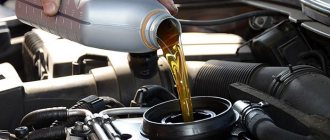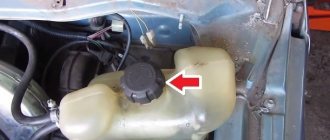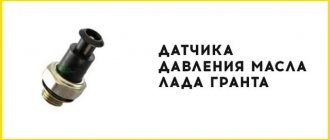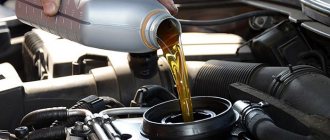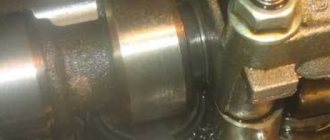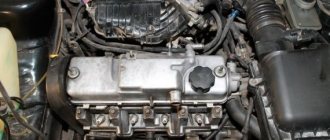Why do you need oil?
Is oil the lifeblood of the engine? This is not entirely true, of course, the comparison is very rough, but still, the engine will not function without oil (or it will, but not for a very long time). Modern motor oils lubricate and protect all rubbing parts, and these are pistons (with their rings), shafts, bearings, etc. Let's just say that good oil extends the life of the engine by many thousands of kilometers.
BUT oil must flow through the system, just like blood itself through human vessels, if the oil is simply poured in a pan and does not go to the rubbing parts - IT IS USELESS!
Search for truth
I work in Chisinau, in a car service center. The management bought a 2014 Porsche 911 turbo S. in the back of 991.1, and later turbo S 991.2 (restyling) 2017. The cars were sunk in the USA and did not show any signs of life, after preliminary diagnostics, it turned out that there was water in the engine, which had corroded the coating of the cylinder walls. After disassembling the engine, it was decided to line the engine in a local office, they were chosen for this reason They have the best equipment in our country. After liners and replacement of all seals, piston rings and necessary threaded connections (bolts and screws), the price for both engines of these parts is comparable to the price of a brand new Renault Logan in a top-end configuration. The turbines were also replaced, because... through the exhaust and water entered the engine. The engines were assembled in accordance with the manufacturer's technical documentation, all tightening torques were observed. After a complete overhaul of the car, the engines were carefully run-in for about 3,000 km, the first oil and filter change was 500 km, the second was 1,500 km, and at the end of the run-in another change, oil according to approval, original filter. I ran the cars myself, always warmed them up, didn’t put any heavy loads on them, the gearbox was in sport mode so that it wouldn’t shift at 1,500 rpm with relatively low oil pressure, all levels and temperatures were always normal. And then, about 2000 km after the break-in, the 3rd piston knocked, when opened, scuffs were discovered in two cylinders, the pistons were smeared on the liners. We arrived with this scrap metal at the office that lined the block, they were a little shocked, and they said, you understand that this could not happen because of the sleeve, but I understand that this could not happen because of the assembly. There is no technical expertise in our city, I want to send the block and piston group to Moscow so that they can give an expert opinion and reseal the block.
It is still unknown how the second car will behave. I will soon remove the crankcase and try to use an endoscope to look at the condition of the liners.
So, while they send it, maybe there is someone here who understands all this and can express their opinion.
What builds up oil pressure in the system?
Everything is simple here - there is a special oil pump that takes oil from the engine sump and pumps it through the system.
It is usually installed in the engine sump and driven by special gears that the engine turns during operation. Oil begins to flow through many channels to the right places under pressure - this is the crankshaft and its bearings, the camshaft and its “bed”, pistons, and much more. It is the pump that is responsible for the pressure; if the pump stops, the pressure indicator will drop to zero. THIS CANNOT BE ALLOWED! Because the engine will not be lubricated at all, which will lead to instant breakdown, especially at high speeds.
BUT often the oil pump does not stop, but simply begins to pump worse, this indicates its wear, which is why you need to know the oil pressure in the engine! To respond in time to the nearest oil pump failure.
Replacing the oil pump
There is nothing difficult about replacing an oil pump. We drive the car into the pit, prepare the tools and get to work.
Removing the battery terminal for repair
The plug is unscrewed with a key
Timing belt without casing.
The location of the 6 bolts that secure the oil pump is marked with arrows
Reassemble the oil pump in reverse order.
The pan and oil pump gaskets must be replaced with new ones. Also, the new oil pump should be washed out of preservative grease and filled with oil (to prevent it from running dry during the first start after repair).
Emergency oil indication
Of course, now in almost all cars there is an emergency indication for a complete lack of pressure, this is known to us all - a “burning oil can”. If it does not go out for some time after starting, for example 10 - 20 seconds is one thing, it is almost always the fault of the oil filter. But if the lamp is constantly on, then this is already an alarm bell. Perhaps the oil pressure sensor has simply failed, or perhaps the oil pump has failed. In any case, the alarm indication is very important!
Remember this rule, if the lamp comes on, then turn off the car and preferably immediately to a service station, either a tow truck, or in tow.
To come in
Already registered? Sign in here.
There are currently 0 users on the page
There are no users viewing this page.
The oil pump plays a vital role in the engine lubrication system of any car. Even short-term operation of a car with a faulty pump will lead to failure of the power unit. Therefore, any car owner should know the main signs of oil pump failure and take appropriate measures in a timely manner.
How to check oil pressure?
The actual check is carried out using a special device - a pressure gauge. It is also worth noting that you need to warm up the engine to operating temperature, usually 90 degrees Celsius. If you measure with a cold engine, especially in winter, the pressure can jump to high values, from 0.5 BAR or even higher, but measuring with a cold engine is WRONG!
In order to check the pressure, you need to find the emergency sensor, which is responsible for the indication on the dashboard. It is worth noting that it is not always located nearby and it is convenient to unscrew it. We unscrew it, and in its place we attach the test output connected to the pressure gauge.
The check can then be divided into two options:
- AT “idle” it is usually from 900 to 1200 rpm.
- Then at “higher” speeds, usually 4000 - 5000 engine speeds.
It is also worth noting that if you unscrew the emergency sensor, the “oil can” will light up on your instrument panel, this is normal. Now a short video showing how measurements are taken.
Troubleshooting
Direct connection of the pump to the crankshaft avoids damage associated with its drive. This, however, does not exclude the possibility of other malfunctions.
Pump malfunctions and their symptoms
The main malfunctions of the VAZ 2110–12 oil pump include:
- clogging of the oil receiver mesh;
- damage to the device body;
- wear of gear seats in the housing and cover;
- wear of the drive or driven gear;
- damage to the pressure reducing valve;
- deformation or damage to the valve spring.
A constantly burning warning light in the form of an oil can indicates a drop in pressure in the lubrication system to a critical level
Signs of oil pump failure may include:
- critical oil pressure warning light on the dashboard;
- engine overheating;
- high-frequency knocking (clattering) at the pump location.
The design of the VAZ 2110–12 engine does not provide for the installation of an oil pressure sensor. Like most modern cars, representatives of the tenth family are equipped only with an emergency (critically low) pressure sensor. When the pressure in the system drops, a warning light in the form of a red oil can lights up on the instrument panel. However, this lamp can also light up in the event of other malfunctions (failure of the sensor, break in its electrical circuit, oil leak, etc.).
Sensor check
Engines of 2110 vehicles, regardless of their modification, are equipped with emergency pressure sensors of type MM 120, manufactured under catalog number 6022.3829.
Emergency oil pressure sensor type MM 120
Characteristics of the MM 120 sensor:
- rated voltage - 12 V;
- weight - 28 g;
- thread - M14x1.5;
- response pressure - 0.4±0.2 kgf/cm2;
- analogues - MM 120D, MM 120DM.
The emergency oil pressure sensors on the “tens”, as in principle on other VAZs, are very capricious devices and fail very often. Testing them at home is easy.
Tools and tools for checking:
- tire compressor or pump with pressure gauge;
- a piece of hose with an internal diameter of 10–12 mm and a length of 20–30 cm;
- 2 clamps;
- crosshead screwdriver;
- key for 21 or 22;
- car tester or control lamp with battery;
- dry rag.
The procedure for checking the sensor is as follows:
- Disconnect the negative terminal from the battery.
- We find the emergency pressure sensor on the engine.
- Disconnect the power cable from the sensor.
- Using a 21 or 22 wrench (the size of the sensor skirt may differ), unscrew the sensor from the cylinder head. In eight-valve engines, when unscrewing the sensor, a small amount of oil may leak out. If this happens, remove any stains with a rag.
- We put one end of the hose onto the sensor fitting and clamp the connection with a clamp.
- We put the other end of the hose on the fitting of the pump or compressor, and also fix it with a clamp.
- We connect the tester probes or “control” wires to the contact terminal of the sensor and to its body so that the device under test acts as a switch. In the initial position, our “switch” is turned on, so the control lamp should be on and the tester should beep, indicating that the circuit is closed.
- We begin to pump air, creating pressure in the sensor housing. According to the characteristics of the device, it should trigger when the pressure reaches 0.4±0.2 kgf/cm2. When the pressure rises to the desired value, the sensor should open the circuit and remain open until it drops.
- The sensor has tripped - you need to reduce the air supply to the hose and wait until it closes the circuit again. At this moment it is important to record the pressure value. If it is close to 0.4 kgf/cm2, everything is in order with the sensor.
The sensor should trigger when the pressure drops to 0.4 kgf/cm2
You can, of course, not waste your time checking it, but simply buy and install a new sensor. Moreover, it costs about 70 rubles.

